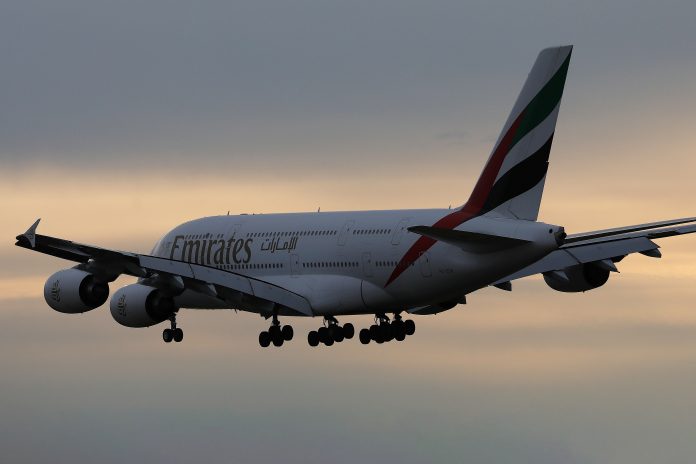2023 could see sustainable aviation fuel take off like never before, with Emirates conducting a successful Boeing 777 flight using the sustainable fuel
Aviation is a key sector that will require immense on the journey towards decarbonisation, and Emirates appears to be taking huge steps.
The flight (EK2646) flew for just under an hour with sustainable aviation fuel (SAF) powering one of Boeing’s two General Electric engines and the other using conventional jet fuel for safety.
What does the flight mean for the future of sustainable aviation?
Adel al-Redha, Emirates’ chief operation officer, explained, “This flight is a milestone moment for Emirates and a positive step for our industry as we work collectively to address one of our biggest challenges – reducing our carbon footprint.
“It is definitely a step forward towards helping the environment. With this step, our aim is to provide an alternative fuel that will reduce carbon emissions and become more environmentally friendly.”
According to Mr Al Redha, the airline’s engineering team is holding talks with European plane maker Airbus about plans for a similar SAF-powered test flight using its flagship A380 double-decker this year.
Emirates has plans for “SAF to make up half its total fuel supply by 2030” – although this depends largely on regulatory certification and adequate supply of the alternative SAF at commercially viable prices – he pointed out.
Mirroring the qualities of jet fuel
Emirates has described their sustainable fuel as a blend “that mirrored the qualities of jet fuel” that included fuel from Neste, a Finnish firm, and Virent, a Wisconsin-based company.
Emirates has described their sustainable fuel as a blend “that mirrored the qualities of jet fuel
According to Virent, they use plant-based sugars to make the compounds required for creating sustainable jet fuel, whereas Neste’s fuel is derived from vegetable oils and animal fats.
The cost of jet fuel and the price on the planet
When an aircraft burns jet fuel, a myriad of byproducts are released into the environment, including carbon dioxide, nitrogen oxides, soot and aerosols, which, at altitude, react with the atmosphere and contribute substantially to global warming.
Protecting the environment may come with an even bigger cost, however. Jet fuel is one of the biggest expenses airlines face. Emirates, for instance, used over 5.7 tons of jet fuel last year alone, costing it $3.7 billion [£3bn] out of its $17bn [£13.7bn] in annual expenses.
But analysts have suggested that sustainable fuels can be three times or more the cost of jet fuel, likely putting ticket prices even higher.











